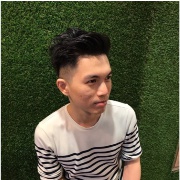Feasibility of Early Detection for Retinal Nerve Fiber Layer Defect with Digital Fundus Image in Glaucoma Patients
Published in The 31st IPPR Conference on Computer Vision, Graphics and Image Processing, 2018
Recommended citation: Chun-Fu Yeh, Guan-An Chen, Kwou-Yeung Wu, Min-Yu Huang (2018) Feasibility of Early Detection for Retinal Nerve Fiber Layer Defect with Digital Fundus Image in Glaucoma Patients. The 31st IPPR Conference on Computer Vision, Graphics and Image Processing, Tainan, Taiwan, August 19-21. http://yehcf.github.io/cfyehprofile/files/20180708CVGIP2018_v1.3.pdf
Due to the fact that retinal nerve fiber layer defect in Glaucoma is not perceived by patients at early stage, a technique to monitor the progress of retinal nerve fiber layer defect is imperative. Currently, the tools or parameters, such as standard automated Perimetry and the cup-to-disc ratio derived from fundus images, can only screen out the glaucomatous patients whose ganglion cells in optic nerve have already lost about 50%. It would be meaningful to clinicians if the loss of optic nerve could be quantified in the early stage efficiently. For this purpose, the fundus images, which has a 45¡ field of view and encircle most of the optic nerve, should be leveraged and a deep learning-based algorithm should be developed to measure the RNFL defect. In this paper, the feasibility of early detection for retinal nerve fiber layer defect with fundus images in glaucoma patients is demonstrated. We built up a deep learning model to detect glaucomatous patients from healthy subjects with fundus images. The accuracy of the deep learning model for classification of Glaucoma patients was 90% and it could be seen that the model treated the features relevant to the retinal nerve fiber layer defect as the essential ones for discriminating glaucoma patients. From this experiment, it is promising to measure the severity of RNFL defects and locate them efficiently with fundus images and deep learning algorithms. Future studies would focus on development of an accurate deep learning-based algorithm, which may take visual field data as reference or labels, for retinal nerve fiber layer defect quantification.
